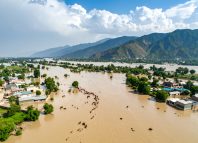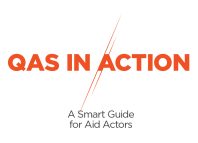The Guardian Wall: Shielding the Highlands from Nature’s Fury
Afghanistan’s geographical location, coupled with significant environmental degradation over time, has left it susceptible to frequent and severe natural hazards, including floods, earthquakes, snow avalanches, landslides, and droughts. These hazards severely threaten people’s lives, their livelihoods, and the country’s economy1.
Residents of Hussain Abad village2 grapple with the persistent threat of annual flooding. The village covers a farmland area of roughly 1,000 and is home to approximately 600 families, including refugees, internally displaced persons (IDPs), and indigenous residents. Every year, 500 acres of this fertile land and 300 of its families are at immediate risk of flooding here. The village’s close proximity to the Kabul River exacerbates its vulnerability during spring and summer, resulting in widespread damage to agricultural lands, homes, communal spaces, and educational institutions.

Among those affected is Haji Amin, a 90-year-old farmer who has spent his life cultivating crops like corn, wheat, watermelon, and cauliflower. Recurring flash floods have consistently devastated his harvests, leaving him and others in distress.
“The river’s proximity places our agricultural fields, residences and places of worship in grave danger. When the floods occur, our farmlands bear the initial brunt of damage, followed by our homes, communal spaces and water sources.” Reflecting on the years spent under this constant menace, Haji Amin highlighted the economic losses caused by crop destruction during floods. He also lamented the absence of schools within the village, elaborating on the community’s appeals to several organisations for the establishment of an educational institution.

Community World Service Asia (CWSA), with the support of its partners3, actively engages communities that are vulnerable to natural disasters, on climate action adaptation and disaster risk response initiatives. At the grassroots level, it collaborates with local residents particularly those threatened with frequent flooding, landslides, and rockfalls, through the establishment of Disaster Risk Reduction (DRR) committees. These communities are engaged in conducting risk evaluations, promoting DRR awareness, and implementing key project activities such as construction of protective walls, boulder barriers, and rockfall prevention systems. Additionally, CWSA is enhancing the capacities of academicians, government officials, and other relevant stakeholders by organising DRR-focused trainings and facilitating the adoption of innovative Japanese technologies in Afghanistan.

CWSA has been working in Husain Abad village since 2018, where it established a DRR committee, worked closely with them to develop a hazard map for the village and trained locals on DRR and risk communication through promotion of contextualised and localised awareness tools and capacity building.
With the support of the Ministry of Foreign Affairs – Japan (MoFA), CWSA conducted a risk assessment in November 2023 and initiated the construction of a 500-meter boulder wall in the village to mitigate flood risks. This initiative brought about a newfound hope among the people of Hussain Abad. The construction of this boulder wall has directly safeguarded 12 jeribs (2.4 hectares) of Haji Amin’s farmland and, in total, 5,000 acres of agricultural land in the village from flood damage. This protects their livelihood and enables families to maintain a better standard of living. Moreover, the building of the wall created work opportunities (of 200 working days) for local daily wage labourers. As community engagement was an integral part of the project, it ensured the men from Hussain Abad were also involved in the construction of the protection wall. Two of Haji Amin’s sons contributed to the construction, enabling them to make an income of AFN 300 (Approx. USD 4) each day.

Since the village was now safer, with flood and landslide threats successfully reduced, a primary school was set up (by another humanitarian organisation) in Hussain Abad soon after the completion of the wall. Now, Haji Amin’s children, along with many other children in the village, have easy and safe access to primary education. This fills them with joy and a renewed hope for a better future. The villagers aspire for the school to be better equipped in the future so that the education quality is improved and sustained. The protective boulder wall brings the people of Hussain Abad immense hope and a sense of protection.
- https://www.worldbank.org/en/programs/afghanistan-disaster-risk-management-and-resilience-program ↩︎
- Situated in the Qarghayi district of Laghman province ↩︎
- CWS Japan & Ministry of Foreign Affairs – Japan ↩︎







